St. Petersburg's strategic mistake: the construction of the CER
The Japanese elite acted in the same direction, but soberly and prudently. Japan did not have a single modern battleship, and the regular army numbered only 67 thousand people. There was no chance of fighting Russia, France and Germany. It was necessary to beat the enemy separately and find allies (Britain). Tokyo realized that the main obstacle to domination in Asia was the West and Russia. They decided to inflict the first blow on Russia, which itself was set up, having sharply intensified expansion in Korea and Northeast China. Now the contribution received from China (and China received money from Russia, that is, the Russian de facto partially financed the militarization of Japan) went not to create strategic railways in Korea and Manchuria, as Tokyo initially planned, but on a huge order of warships in Britain. They had to become the most powerful and modern in Asia. The fleet was a priority in the plans for future expansion of the Japanese empire in the region.
The great role played by the unity of the Japanese nation. The Japanese were confident that they could defeat even a strong enemy. Japan has shown fanatical determination to master the region. And Japan showed great success: the population grew from 34 million in 1875 to 46,3 million in 1904. Foreign trade in the same period grew 12 times - from 50 million yen to 600 million yen. Moreover, 85% of Japanese exports accounted for industrial products. That is, the country showed impressive progress in industrialization. It is also worth noting the high level of education in the country.
Russia openly challenged the growing ambitions of the Japanese empire and was the most accessible and vulnerable enemy. Petersburg promised China protection from Japan and assistance in the payment of indemnities. In the shortest possible time, a Russian-Chinese bank was created, which had the right to issue currency and collect taxes on behalf of the Chinese Ministry of Finance, build railroads within Manchuria, and conduct a telegraph message. Strengthened Russia and in Korea. The Korean king actually lived in the Russian residence, and Russian merchants and industrialists took advantage of the weakness of the Korean political and economic system. The Russians achieved the first concessions from the northern borders of Korea to the mouth of the Yalu river in the west and the mouth of the Tyumen river in the east, with a total area of 3300 square miles. In May, 1897 was the original owner of the concession, Julius Brunner, sold it to the imperial court. The court schemers - the Grand Duke Alexander Mikhailovich and the captain Alexander Bezobraz, planned to create a powerful East Asian company, analogous to the British East India Company, from which the British power began in Asia. It was about creating a mechanism for promoting Russian political and economic interests in the greater Far East. It was a very dangerous undertaking, since Russia was already a few decades late with such an expansion. The Russian Far East did not have the military-economic, demographic and transport-infrastructure potential for such an offensive policy in Korea and China.
Thus, the Japanese Empire at that time was on the rise, and the diplomatic defeat of the great powers only strengthened the desire of the Japanese to achieve their goals. Among all the markets in the world, Manchuria was the most important for Japan. And Russia at this time with the head climbed to the Northeast China. Also, Russia prevented Japan from taking Korea - “a knife aimed at the heart of Japan” (a strategic assumption-bridgehead). And Japan defiantly began to prepare for war with Russia.
The Great Siberian Way
The two main pillars of the Russian Empire in Manchuria-Zheltorossiya were the CER (Chinese Eastern Railway) and Port Arthur. For the first time, the idea of building a railway in Siberia was also submitted by Count N. N. Muravyov-Amursky. In 1850, he proposed a project for the construction of a wheeled road here, which was later to be replaced by an iron one. But due to lack of funds, this project remained on paper, although all the necessary research was done in 1857. And after Muravyov signed the Beijing Treaty in 1860, he immediately began to “attack” Petersburg with the idea that the railway going from the capital to the East would change the fate of Russia. Thus, the idea to build a railway from the European part of Russia to the Pacific Ocean appeared in a timely manner and the implementation of this project could really change history Russia, to make it the leading power in the Asia-Pacific region. However, the beginning of the implementation of this plan was postponed until the 1880-ies.
Almost simultaneously with Count Muravyov, English engineer Dull proposed to build a horse-drawn railway from Nizhny Novgorod, through Kazan and Perm, and then across Siberia to one of the ports in the Pacific Ocean. But this proposal, unfortunately, did not evoke any sympathy from the Russian government. Although the Siberian way connected the entire Russian empire into a single whole and allowed to begin the capital development of Siberia and the Far East, make them powerful raw materials of the empire, create the first industrial centers, speed up the process of industrialization, increase the population flow to the East. Russia could occupy a dominant position in Korea and Northeastern China, but already relying on a serious base on Russian territory, in Siberia and in the Far East.
In 1866, Colonel E. V. Bogdanovich, seconded to Vyatka province to assist the starving, stated the need to build a railway from the inner provinces to Yekaterinburg and further to Tomsk. In his opinion, this road could have prevented famine in the Urals Territory and, being then laid through Siberia to the Chinese border, would be of major strategic, trade and economic importance. The idea of Colonel Bogdanovich was approved, research began, and by the end of the 1860s. there were already three projects about the direction of the Siberian Railway.
However, despite the military-strategic, economic importance of the project and the attention shown to the proposal of Colonel Bogdanovich by Tsar Alexander II, the projects of the future road did not go beyond the special literature and scholars of discussions. Only in 1875, the question of building the Siberian Road was discussed in the government, but it was planned to be built only within the European part of Russia and in the future no further than Tyumen. In the end, a compromise was made - to create a water-railway route to Siberia.
Real actions in the European part of Russia were started only after 1880. Emperor Alexander III decided that the railway should be laid to Siberia. But things were moving very slowly and the king noted with sadness: “It’s sad to see that nothing significant has been done in the direction of mastering this rich but untouched country; over time, something must be done here. ” But a few more years passed before Petersburg went from words to deeds.
In 1883-1887 extensive work was carried out on the construction of the Ob-Yenisei water system with clearing and straightening a number of small river channels, installing a canal, building a dam and locks. Thus, an opportunity was created to transport cargo and passengers along a huge water-railway route: from St. Petersburg along the Volga-Baltic water system to Perm, then along the Perm-Yekaterinburg-Tyumen road, then along the Ob-Yenisei and Selenga water systems and further along the Amur River down to the Pacific. The length of this path was more than ten thousand kilometers. However, the use of this path was entirely dependent on natural weather conditions. As a result, the journey was long and difficult, and sometimes risky. For the development of Siberia and the Far East required the railway.
In 1887, the decision was made to build a road. It was assumed that it would not be solid, but mixed, water-rail. Only in February, 1891 r issued a decree on the construction of a “continuous across the whole of Siberia railway” from Chelyabinsk to Vladivostok. Its construction was declared a "great popular affair." The highway was divided into seven roads: West Siberian, Middle Siberian, Circum-Baikal, Trans-Baikal, Amur, North-Ussuri and South-Ussuri. Later, the Chinese Eastern Railway appeared. 19 May 1891 in Vladivostok began the construction of the Great Siberian Route. In November, the government allocated 1892 million rubles for priority 150 and 20 million rubles for auxiliary work. The construction was supposed to be completed in the following terms: Chelyabinsk - Ob - Krasnoyarsk - to 1896; Krasnoyarsk - Irkutsk - to 1900; Vladivostok - Grafskaya line - to 1894-1895 The preliminary cost was determined in 350 million rubles in gold, or 44 thousand rubles per kilometer. Since 1892, survey and construction work has been launched on all roads except Amur.
For strategic reasons the gauge was wide. The desire to accelerate the work and the conditions of the territory (virgin forests, rocks and powerful water barriers) led to the fact that the road was single-track. The scale of the work was titanic. Already Ob, Irtysh and Yenisei, not to mention Baikal, could repel all the desire to build a road. For half a year, the soil froze by almost two meters. A whole army was formed for the construction: in total, more than 100 thousand people were employed at the construction site at a time (tens of thousands of laborers, thousands of bricklayers, carpenters, plotters, carriages, ferrymen and technical specialists). Workers were recruited from the poorest provinces of Russia and from local residents. Local peasants chopped wood, brought land, ballast and building materials. Attracted prisoners. At first they were bad helpers. But then they began to read 8 months for the year. A criminal record after two years of work was reduced by half. Free builders were given 42 acres of land. The work was mainly done manually. The main tools of labor were shovels, crowbars, axes and saws.
The wide scope of work at the expense of the state allowed expediently maneuvering labor. This gave an advantage over the private way when construction was carried out by separate, competing joint-stock companies whose goal was to profit at any price. The use of a huge number of people in the construction of railways from the Urals to the Pacific Ocean allowed us to constantly increase the pace of construction of the Trans-Siberian Railway. As a result, between 1892-1895. the highway was propelled at a speed of about half a thousand kilometers a year. The growing external threat forced the pace of construction to accelerate and in 1895 a breakthrough of a thousand kilometers a year was made. The Empire literally tore the veins to stretch the iron path to the Great Ocean.
In the spring of 1891, construction began on the Ussuri line. In 1893, two years ahead of schedule, the government opened financing for the construction of the Middle-Siberian road. An important event was the construction of a bridge across the Ob. Near the bridge there was a village, which then turned into the city of Novosibirsk. The Middle-Siberian railway started from the eastern abutment of the bridge and ended in Irkutsk. It was removed from transport communications, it was necessary to deliver not only workers, but also equipment and materials from Central Russia. Other major rivers were major barriers, through which large bridges had to be built, including the length of 515 meters across the Tom and 950 meters across the Yenisei.
In the summer of 1896, they began work on the section from Irkutsk to Baikal. This part of the Trans-Siberian Railway was accepted for permanent operation in 1901. Here, construction reached the peak of difficulties - in the area of Lake Baikal - the world's largest freshwater reservoir. It took 1900 days to drive around the lake in 47. Due to the complexity of the terrain, transportation distance and other reasons, the overspending on the construction of this section reached 16 million rubles, and the kilometer of the road cost 90 thousand rubles. The monstrous efforts of the workers built a grand ferry that ran three times a day. The rolling stock was transported by powerful ferry icebreakers “Baikal” and “Angara”, which regularly cruised at the 73-kilometer ferry. The icebreakers were built by the British company Sir W. G. Armstrong, Whitworth and Co., and then the ships were taken to Baikal in a disassembled form. The maximum ferry capacity was 27-40 wagons per day. The ferry went from the harbor Larchivnichnaya to the pier Mysovaya. Further the road went to Verkhneudinsk.
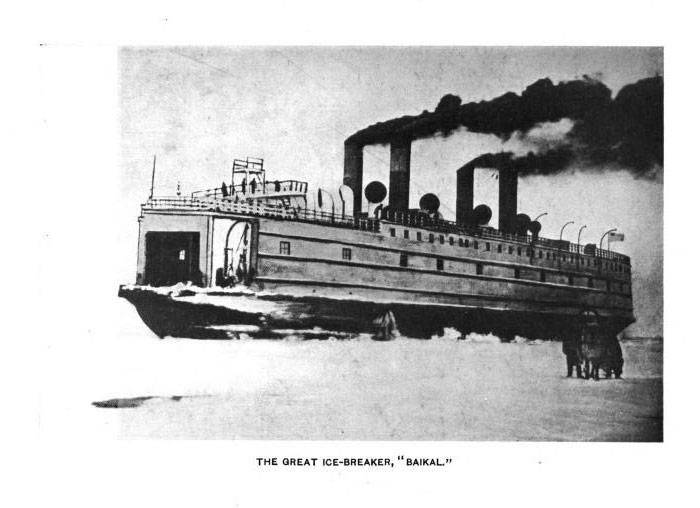
Ferry icebreaker "Baikal" on Lake Baikal, 1911
However, such a mixed method of transportation later proved to be insufficiently effective, especially in the prewar and military period, when it was necessary to quickly transfer a mass of troops, weapons, and equipment to the Far East, as well as to organize their full supply. In the winter frost, the troops had to force a huge lake on foot on the ice, making stops for heating. Periodically storms raged and the north wind broke the ice that led to the death of people. Engineers put the railway track, but the locomotive could not pass on the ice and the cars with weapons, stocks dragged horse. In parallel with the railway, an ice road was laid. But the pace of such a crossing was extremely slow. This forced to raise the question of the final survey and construction of the Circum-Baikal Railway.
Back in 1891, there were two options for bypassing Lake Baikal - the north and south. The north seemed simpler. But the expedition of O. P. Vyazemsky established that the southern variant, despite its complexity, is still preferable, since the locality is better inhabited here. Therefore, we stopped at it. The path passed along the rocky coast, bending around Baikal. Russian builders made another feat. 260 tunnels with a total length of 39 km, 7,3 km of retaining walls, 14 safety galleries, viaducts, breakwaters, numerous bridges and pipes were built on the Circum-Baikal railway 47 km long. This road is unique in the concentration of a variety of artificial structures, becoming a visual encyclopedia of engineering and construction art. Only the volume of earthworks during the construction of the road was over 70 thousand cubic meters per kilometer. Not surprisingly, this line was built for six years. The selfless labor of builders allowed in 1905 (a year ahead of time) to begin regular train traffic. At the same time, the ferry has existed for almost 20 years. To do this, built a new pier Baranchuk near the station Baikal.
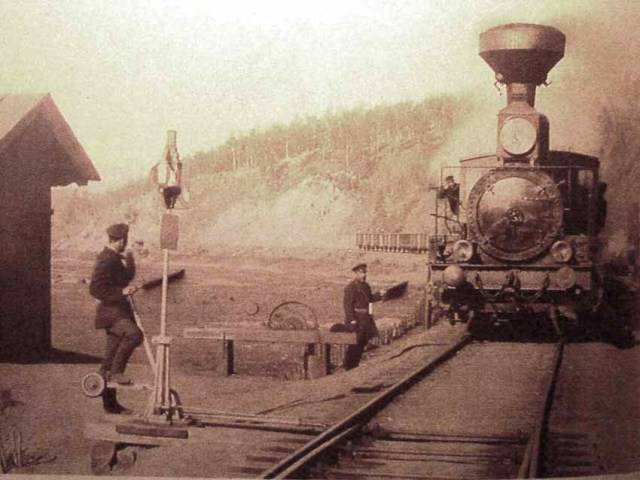
Transsib. Near the station Khilok. 1900 year
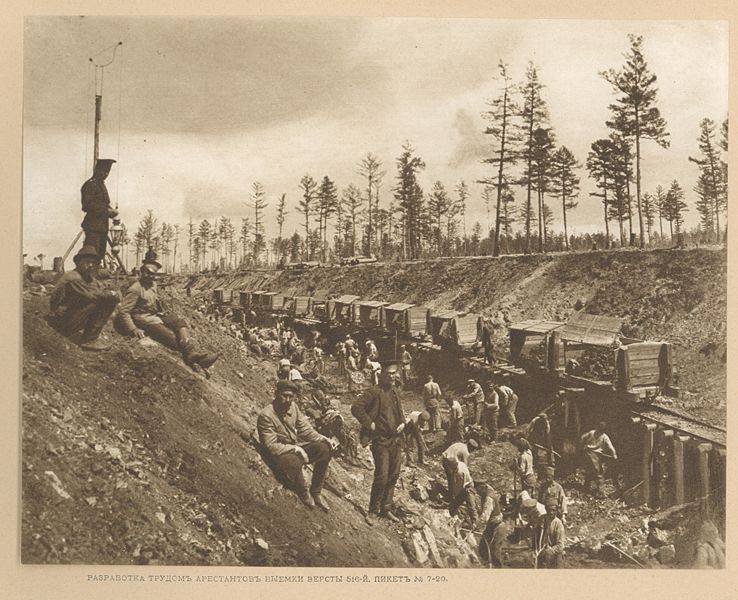
Construction of the Siberian way
Construction of the CER
After the Trans-Baikal road (Mysovaya - Sretensk), at first they planned to build the Amur Road. In line with this in 1893-1894. made a survey from Sretensk to the village of Pokrovskaya on the Amur and further to Khabarovsk. However, the complexity of the conditions, the severity of the climate, and most importantly geopolitics, the seizure of Port Arthur by Russia made it necessary to make another decision - to lead the railway to Port Arthur and Far.
The leading and fatal role in this decision was played by Witte. He proposed to carry out the final part of the journey through Chinese territory, saving five hundred kilometers to Vladivostok. The main argument with which St. Petersburg convinced Beijing was military assistance from Russia to China in a possible struggle with Japan. Witte told Chinese Minister Li Hongzhang that “thanks to us, China remained intact, that we proclaimed the principle of China’s integrity and that, by proclaiming this principle, we will forever hold on to it.” But, in order for us to support the principle proclaimed by us, it is necessary first of all to put us in a position so that in the event of which we can really assist them. We cannot provide this assistance until we have a railway, because all our military strength is and always will be in European Russia. ... Thus, in order for us to maintain the integrity of China, we first need a railway, and a railway that runs along the shortest route to Vladivostok; for this, it must pass through the northern part of Mongolia and Manchuria. Finally, this road is also needed economically, since it will raise the productivity of our Russian possessions, where it will pass, and also the productivity of those Chinese possessions through which it will go. ”
After some doubts, the Chinese government, in gratitude for its help in fighting the encroachment of Japan, agreed to build a section of the Trans-Siberian Railway - the Chinese Eastern Railway (CER), via Manchuria. Russia received the right to build a railroad through Mongolia and Manchuria to Vladivostok. A direct bribing of the leading minister of the empire, Qing Li Hongzhan, played his role (he received a huge sum - 4 million rubles). It was a phenomenon traditional for China at that time, high dignitaries and generals took bribes, promoting the interests of the Western powers and companies.
"Thus," noted Witte, "the road of the greatest political and commercial significance was passed into our hands ... It was to serve as an instrument for bringing Eastern and European nations closer together." The Minister of Finance believed that this road would contribute to the peaceful conquest of Manchuria. Witte believed that the Great Road would be the Russian response to the construction of the Suez Canal and the creation of the Trans-Canadian railway. England already controlled two-thirds of the Chinese ports, and Russia had one way to strengthen its position in the region — to include Manchuria in its sphere of influence and bring the road to Vladivostok and Port Arthur. The gain in the Far East of the Japanese Empire, which threatened the interests of the Russian Empire in China, also played in favor of this option. In addition, the CER, in the opinion of its supporters, made it possible for Russia to enter new markets in the Asia-Pacific region.
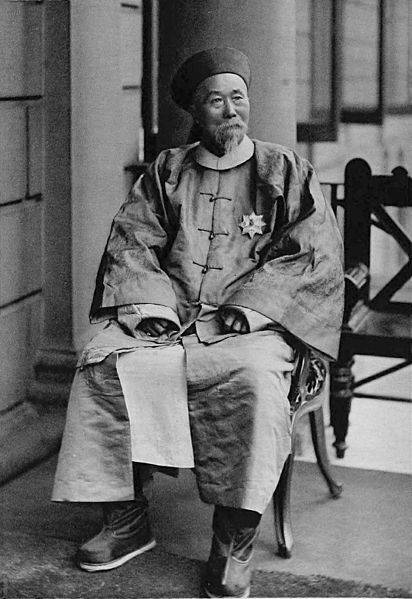
One of the most influential and odious dignitaries of the Qing Empire Li Hongzhang. He signed the Simonoseki Peace Treaty with Japan (1895) and the Union Treaty between the Russian Empire and China (1896)
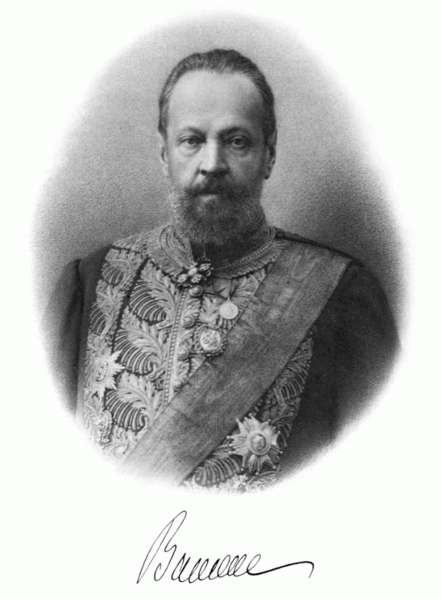
Minister of Finance of Russia and "governor" of the CER Sergei Yulievich Vitte
However, this road had opponents. In China, ferment and discontent with foreigners, who enslaved the great Asian empire, intensified. That is, the road was under threat, and it was necessary not only to build it, but also to protect it, selecting an entire corpus for this. Future rebellion "boxers" will confirm this threat. Chinese rebels will destroy about 900 versts from 1300, the damage will be over 72 million rubles. Russia will have to create Zaamursky District of the Border Guard.
In Russia itself, supporters of the option of passing the Great Siberian Route along the Amur River justified it with the subsequent growth of the possibilities for the economic and social development of the Russian territories of Eastern Siberia and the Far East. The Amur Governor-General S. M. Dukhovsky said that even if Manchuria was annexed to the Russian Empire, the importance of the Amur railway for Russia would remain immense, as would its “colonization and basement importance”. He stressed that in no case should stop the previously planned construction of the railway line along the Amur River. In addition, the holding of the road on Chinese territory contributed to the development of the Chinese, not the Russian population. In a military-strategic sense, this road was threatened by the insurgent Chinese population, and in the event of a war with Japan - by the Japanese army. To protect the road, it was necessary to allocate an additional large military contingent and maintain it on foreign territory.
Thus, the conduct of the railway in Chinese territory was associated with a very large strategic risk. However, Witte, who, according to some researchers, was associated with the masters of the West and was their high-ranking “agent of influence” in Russia, managed to overcome this resistance, and the CER went south along Manchuria. Only defeat in the Russian-Japanese war 1904-1905. demonstrated to the tsarist government the strategic fallacy of this decision, which accelerated the construction of the Amur railway.
In December 1895 of the year, on the initiative of the Minister of Finance S. Yu. Witte, a Russian-Chinese bank was established with an initial capital of 6 million rubles. For its formation, 15% of funds was provided by St. Petersburg International Commercial Bank, and 61% came from 4 French banks. 22 May (3 June) 1896 was signed the secret Russian-Chinese agreement on the alliance of Russia and China against Japan (Moscow Treaty). On the Russian side, S. Yu. Vitte and Prince A. B. Lobanov-Rostovsky signed the agreement, with the Chinese side - Li Hongzhang. Russia and China concluded a defensive alliance, “which should receive its implementation in case of any Japanese attack on the Pacific possessions of Russia, on China or Korea. In this case, both contracting parties undertake to support each other with all land and sea forces that they currently possess, and as much as possible to help each other in supplying the same forces with various supplies. ” The agreement gave Russia the right to build a railway line through the territory of Manchuria: “In order to facilitate Russian troops access to the points threatened by the attack and provide means for the existence of these troops, the Chinese government agrees to build a railway through Manchuria ... During the hostilities Russia has the right to free use of this road for the transportation and supply of its troops. In peacetime, Russia enjoys the same right ... ".
27 August (8 September) 1896, the Chinese envoy to the Russian Empire, Xu Zengcheng signed an agreement with the Board of the Russian-Chinese Bank, valid for 80 years, to grant the bank the right to build a railway through Manchuria and to establish the Joint-Stock Company of the Chinese Eastern Railway ". The ratification of the secret treaty took place in Beijing on September 16. The concession contract established that the track width of the CER should be the same as on the Russian railways. Land owned by the Company, as well as its revenues were exempt from all duties and taxes. The company was granted the right to independently set railway tariffs. Of particular importance was the Company's right to the "unconditional and exclusive management of their lands," that is, the entire right of way. The terms of the concession agreement turned this strip into something like a large, Russian territory stretched along the road. The CER society has even brought its own armed guard. After 80 years, the railway line should have been diverted to the Chinese government free of charge. After 36 years, it acquired the right to buy the road. The highest supervision on the CER was concentrated in the hands of the Russian Minister of Finance. Witte for some time became the real ruler of the CER, and in fact the whole of Manchuria.
Thus, the Russian Empire in the Middle Kingdom took second place in the construction of railways, second only to Britain. By the end of 1898, the British Empire received concessions from China for the construction of a railway with a total length of 2800 miles, Russia - 1530 miles, Germany - 720 miles, France - 420 miles, Belgium - 650 miles, USA - 300 miles.
16 (27) August 1897 of the year was the day the construction of the CER started. In 1898, circumstances have changed somewhat. Russia occupied Port Arthur, and now it was necessary to build a road not only to Vladivostok, but to build a branch to Port Arthur. In June, 1898, Russia received a concession for the construction of the southern branch of the CER (later known as the South Manchurian Railway), which was supposed to provide access to the Dalniy (Dalian) and Port Arthur (Lüshun) port roads.
In the summer of 1898, the Russians arrived in a miserable village, which soon became a major center called Harbin. Very quickly banks, stone houses, hotels, telegraph and Harbin were built here and became the center of Russian influence in Northeast China.
Source: A. Shirokorad. Lost lands of Russia: from Peter I to the Civil War
To be continued ...
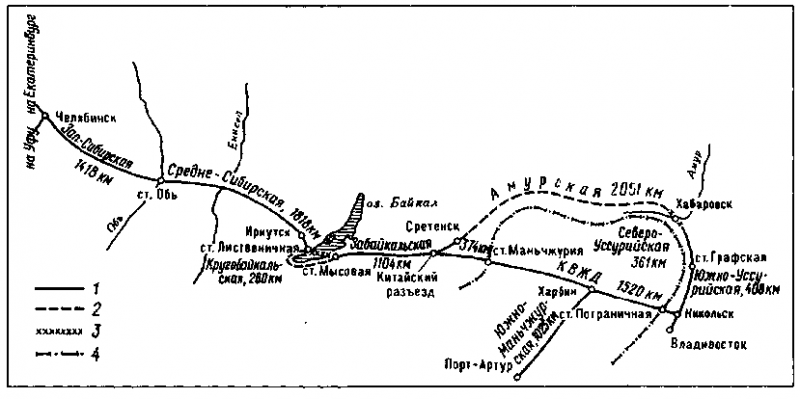
Information